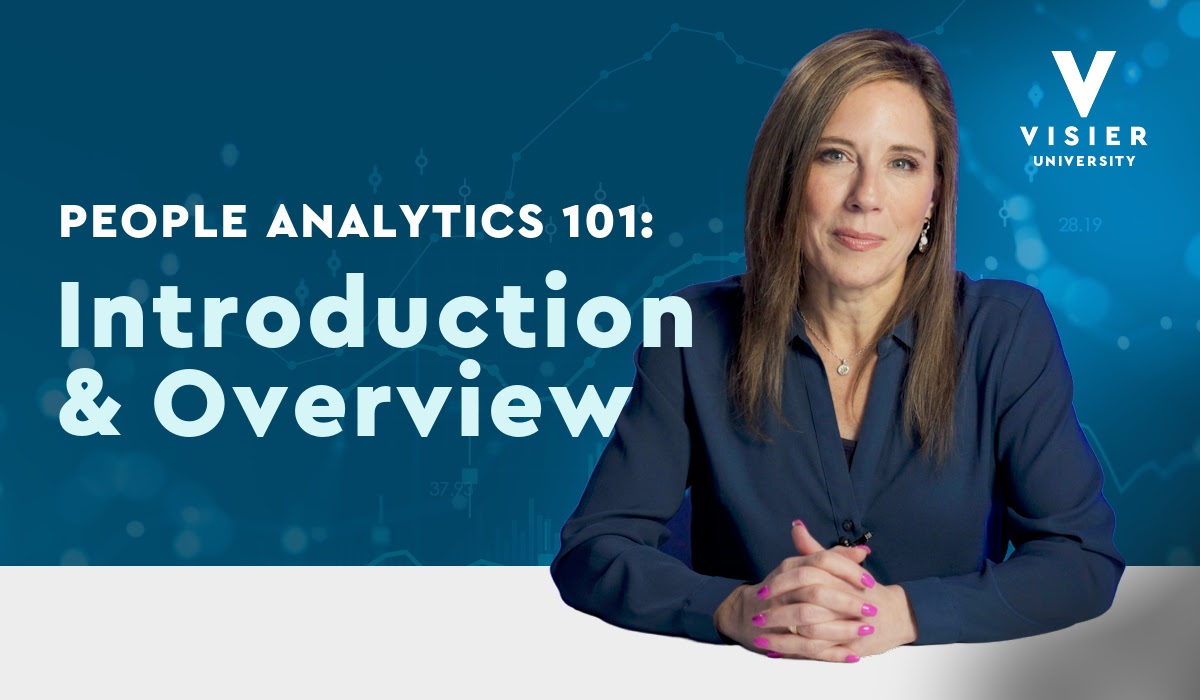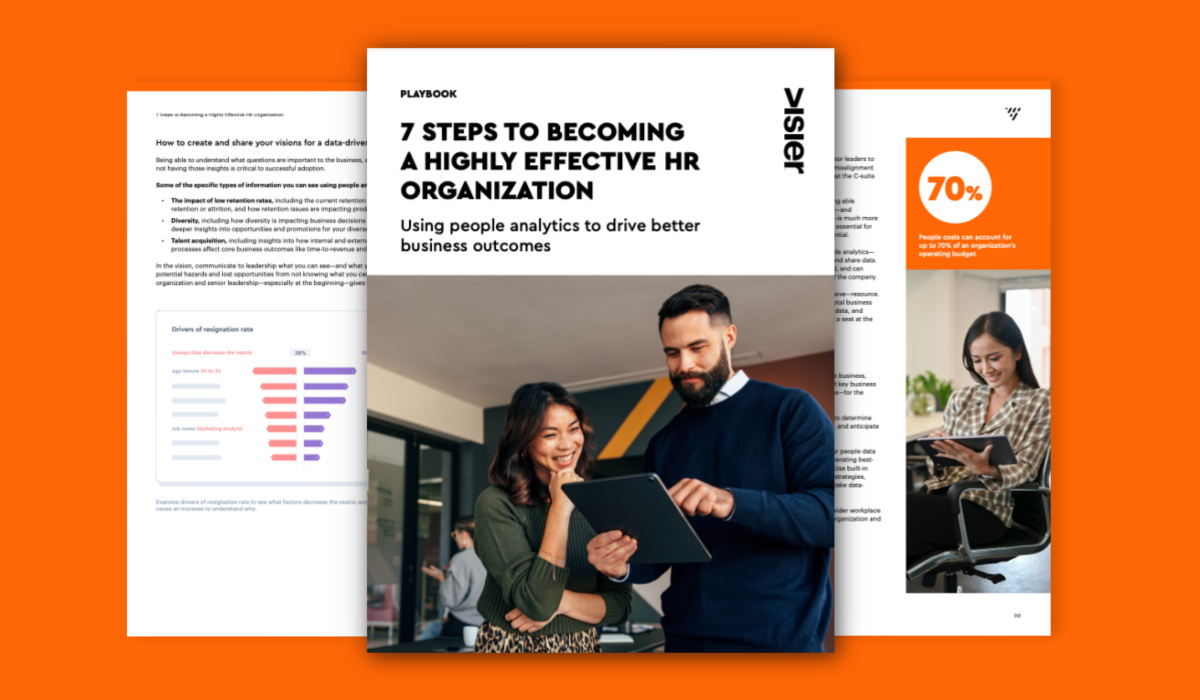PEOPLE ANALYTICS
How to Use People Analytics Dashboards to Drive Better Business Results
Give your HR teams and people managers the power to drive business insights, inform strategies, and make key decisions with a centralized people analytics dashboard.
Take a self-guided tour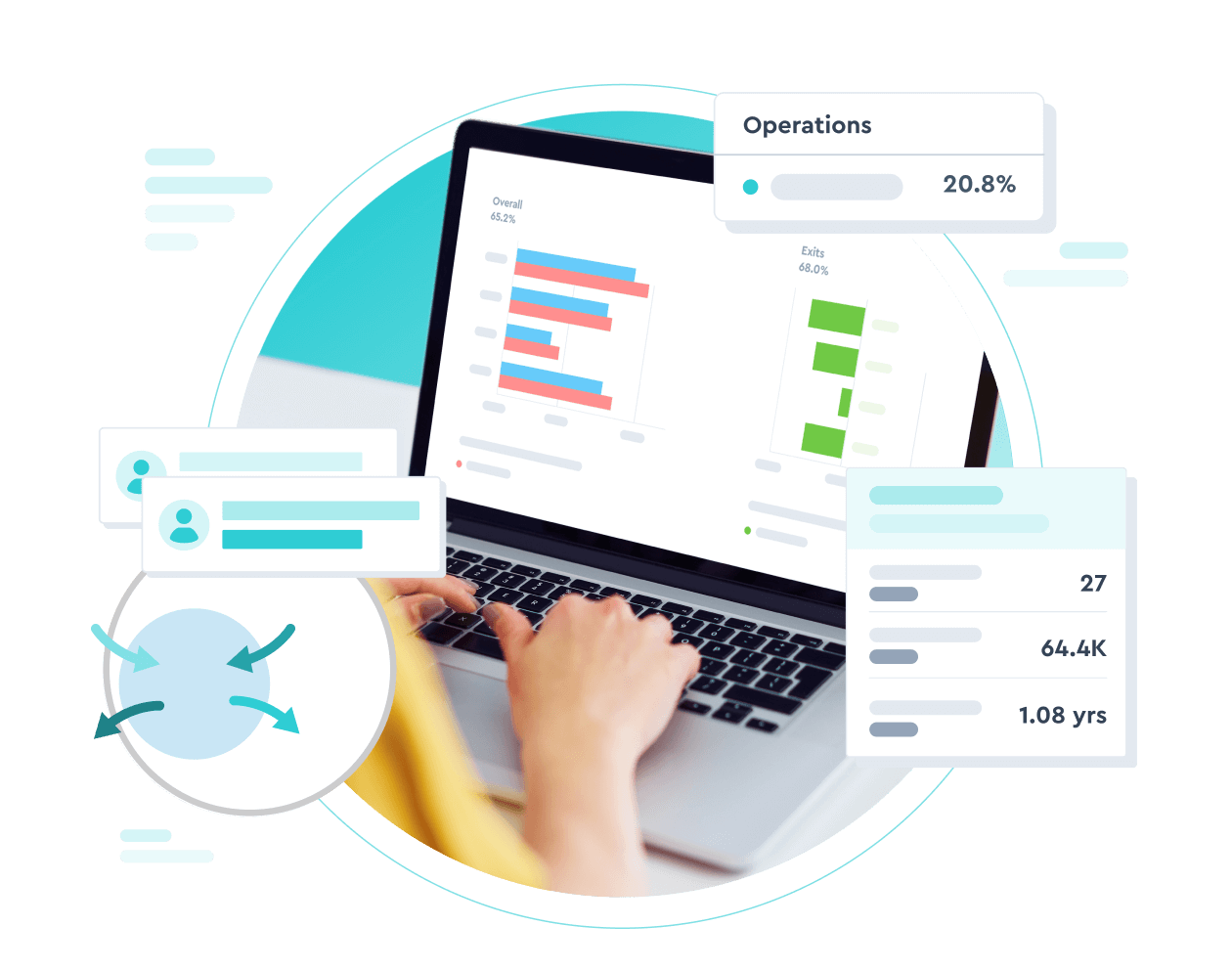
Table of contents
What is a people analytics dashboard?5 benefits of using a people analytics dashboardBest practices for using people analytics dashboards6 people analytics dashboard examplesTrack metrics that matter in one viewWhat is a people analytics dashboard?
A people analytics dashboard is a visualization tool that helps HR teams and people managers easily view and analyze people data from multiple sources, enabling them to drive better business results. It provides a comprehensive view of key metrics—displayed through visuals like numbers, charts, and graphics—and other insights and supports strategic planning and data-driven decision-making. By centralizing employee data and insights into people analytics dashboards, leaders are able to make data-informed decisions and strategies.
Interactive people analytics dashboards transform a single view into several individual cells or widgets that summarize and present data through numbers, graphs, tables, and various other visuals. These visuals often include functionality that let users drill down into more detail on specific metrics or data sources. Rather than relying on a single static report on attribution rates or multiple reports on various HR metrics that are spread across different systems, people analytics dashboards bring all the critical information into a single, interactive view.
With a people analytics dashboard, you can gain valuable insights into employee performance, engagement, and retention, which can inform key decisions and drive business success. This tool eliminates guesswork and provides a more effective approach to HR management.
5 benefits of using a people analytics dashboard
Utilizing a people analytics dashboard can prove to be immensely advantageous for organizations, offering a variety of benefits that can significantly impact their operations. The core benefit of people analytics dashboards is their ability to simplify and centralize key metrics and data points that HR teams use to drive their strategies and make decisions. Here are five key advantages:
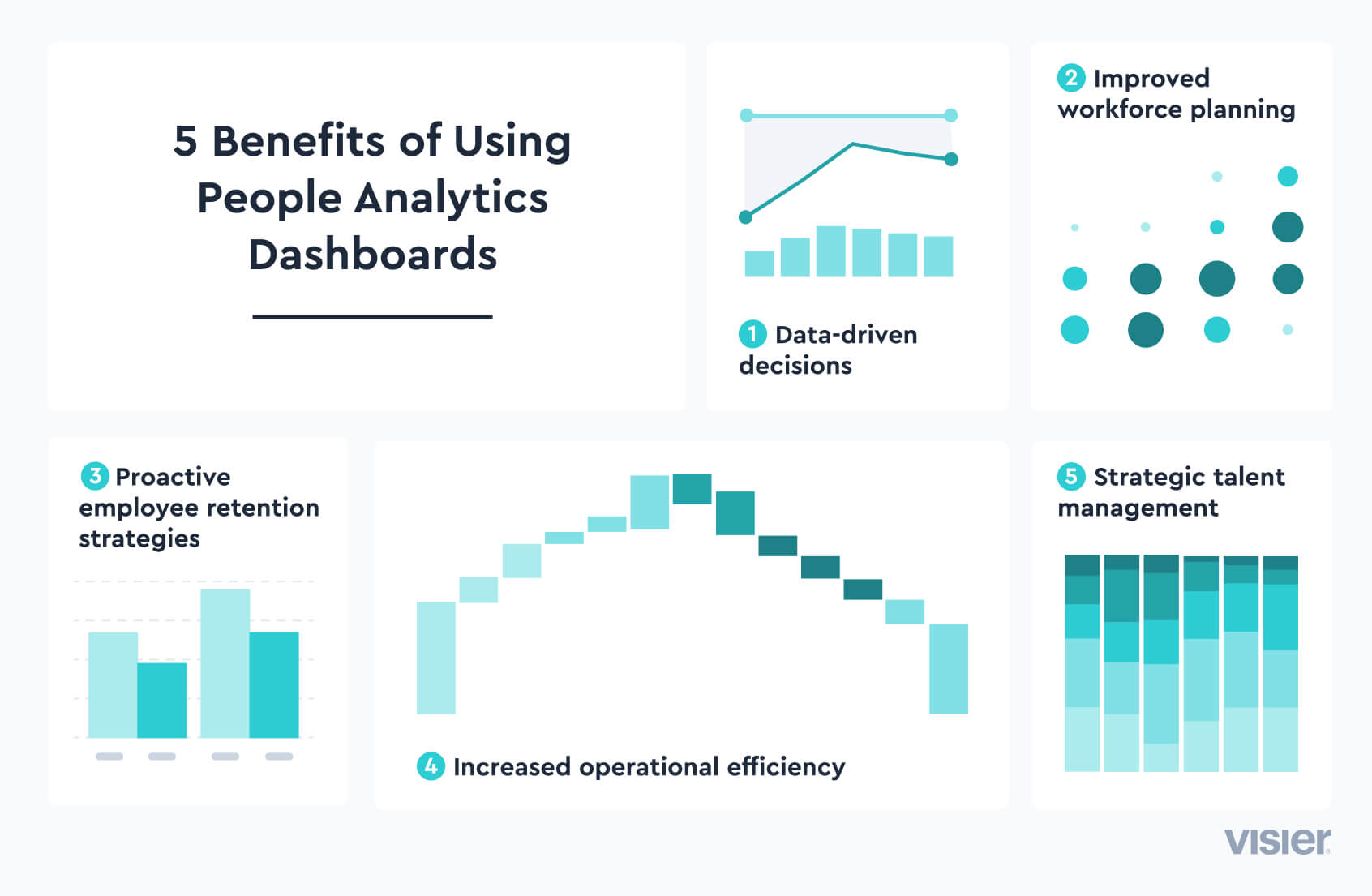
1. Data-driven decisions
A data-driven approach increases HR effectiveness by ensuring decisions are based on concrete evidence and insights, leading to more informed and effective choices. By using a people analytics dashboard, leaders can see important people data and critical HR metrics in one place to gain valuable insights into various aspects of their workforce, such as employee performance, engagement, turnover, and productivity.
2. Improved workforce planning
With a people analytics dashboard, organizations can gain a comprehensive understanding of their workforce dynamics. This includes insights into employee demographics, skills, performance, and potential. Armed with this knowledge, organizations can better anticipate future workforce needs, identify skill gaps, and develop targeted strategies for recruitment, training, and development. By aligning workforce planning with business goals, organizations can optimize their talent acquisition, retention, and development strategies.
3. Proactive employee retention strategies
People analytics dashboards empower organizations to quickly and easily detect patterns and trends related to employee turnover and identify individuals, including high performers, who may be at risk of leaving. HR and people leaders can use people analytics dashboards to track critical employee retention metrics and proactively develop informed retention strategies, such as personalized career development plans, mentoring programs, or targeted recognition initiatives. These measures contribute to a stronger talent pipeline and increased retention of key employees.
4. Increased operational efficiency
Getting data rapidly into the hands of decision-makers can help them make better decisions. People analytics dashboards allow teams across the organization to quickly identify inefficiencies within their teams and units, understand how their functions are operating compared to the larger organization, and proactively optimize processes and strategies. By analyzing data related to workforce productivity, performance, and resource allocation, leaders can identify areas of improvement, streamline workflows, and allocate resources more effectively. This can lead to cost savings, increased productivity, and better overall operational efficiency.
5. Strategic talent management
A people analytics dashboard empowers organizations to take a proactive approach to talent management. By analyzing data on employee performance, employee skills and skills gaps, and career aspirations, organizations can identify high-potential individuals, nurture their development, and strategically align their talents with the organization's long-term goals. This strategic approach to talent management ensures that organizations have the right people in the right roles, fostering a culture of growth and success.

Best practices for using people analytics dashboards
When it comes to utilizing a people analytics dashboard effectively, there are a few best practices to keep in mind.
Set clear goals. In order to successfully use a people analytics dashboard, it's important to set clear goals and objectives for what you hope to achieve. This will help ensure that you're using the data in a way that's aligned with your overall HR strategy.
Ensure data quality. Your people analytics dashboard will only be as helpful—and as useful—as the data you feed into it. Ensuring data quality and accuracy is critical. In order to make informed decisions based on the data, you need to be confident that it's reliable and up-to-date. This means taking steps to ensure that your data is clean, consistent, and free from errors.
Get stakeholder sponsorship. To ensure teams and leaders will use the dashboards you build, It's important to involve stakeholders throughout the process. This can include managers, employees, and other key stakeholders who have a vested interest in the success of your HR—and business—initiatives. By getting their input and buy-in, you can ensure that everyone is on the same page and working towards the same goals.
Train your teams. Select an initial team of champions from both inside and outside of the human resources department that can provide HR-specific insights and people who have insights into the organization’s strategic direction and needs. Train those champions on how to read and use people analytics dashboards. Create learning paths for your champions, and include them at each stage of the process—planning, testing, rollout, and refinement. By doing so, you will both expand your knowledge and skill set and initiate a feedback loop to ensure your people analytics dashboards are relevant and impacting business outcomes.

6 people analytics dashboard examples
1. Headcount
Headcount metrics are an essential element of people analytics. This dashboard provides an overview of the organization's current headcount, categorized by different demographics such as age, gender, ethnicity, and job level. It helps identify workforce composition and diversity trends, enabling HR teams to monitor and manage diversity and inclusion initiatives effectively.
You can use this dashboard in a number of ways. You can see a breakdown of headcount in business broken out by organization to understand how and where you're staffed. Additionally, you can view the evolution of the headcount over time. On one side, look at how the numbers are looking during a certain month. On the other, add the same numbers over the same month one year prior. This will give you an overview of the headcount changes in the last year, helping you identify positive or negative trends.
You may also choose to look at things like employee composition to see how many full-time and part-time employees you have, as well as the number of contractors. Again, you can compare the current numbers with those from the previous quarter or the previous year.
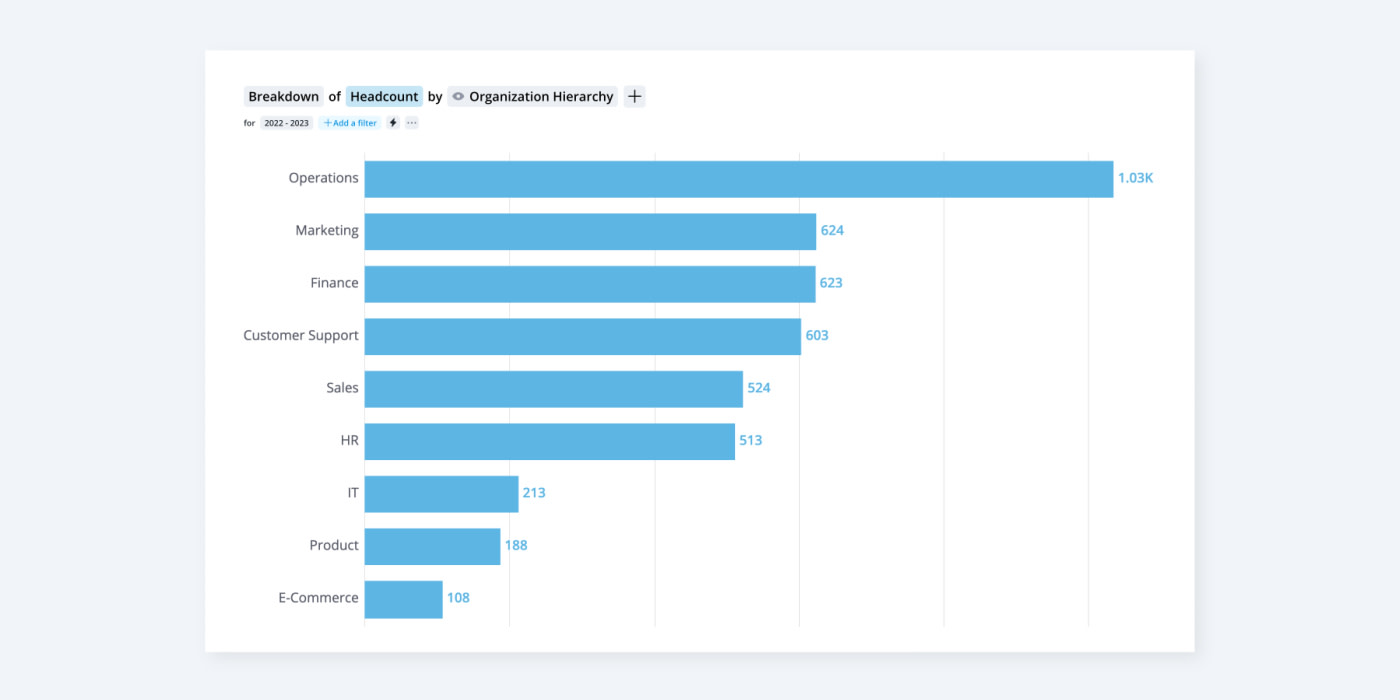
2. Employee movement
Employee movement dashboards track career flows within the organization, including promotions, transfers, and internal mobility. It offers insights into career progression, talent development opportunities, and succession planning. HR professionals can use this information to identify high-potential employees and ensure a smooth flow of talent across departments.
External and internal hires, successions, and upward and lateral movement within the company are all equally important. A talent flow dashboard can help you keep track of all this data and show you important patterns along the way.
You’ll be able to see how many new external hires you’ve had over a certain period and compare it to the same period in previous years. You can also look at internal hires. How many people are promoting? How many are reskilling and moving to a different position at the same level? Internal mobility helps nurture a culture of personal growth, which is key for maintaining morale, boosting the retention of high-performing employees, and building a diverse workforce.

3. Turnover and retention
Employee turnover or attrition is one of the most critical and analyzed HR metrics. When someone leaves the company unexpectedly, it can cost the organization a lot of money and time. Not to mention the potential impact of turnover contagion, the tendency for employees to be influenced to look for new jobs when their coworkers announce that they are looking or have found another job.
Employee turnover dashboards can show how many employees have left the company during a certain period. Similar to headcount, you can run a comparison between the numbers during the past month and those of the same period one year prior. This can help you spot negative trends and show you potential ways to address them.
Turnover and retention dashboards track employee turnover rates, reasons for attrition, and retention trends. This enables HR to identify patterns or departments with higher turnover rates and quickly implement targeted retention strategies and address any underlying issues affecting employee engagement and satisfaction.
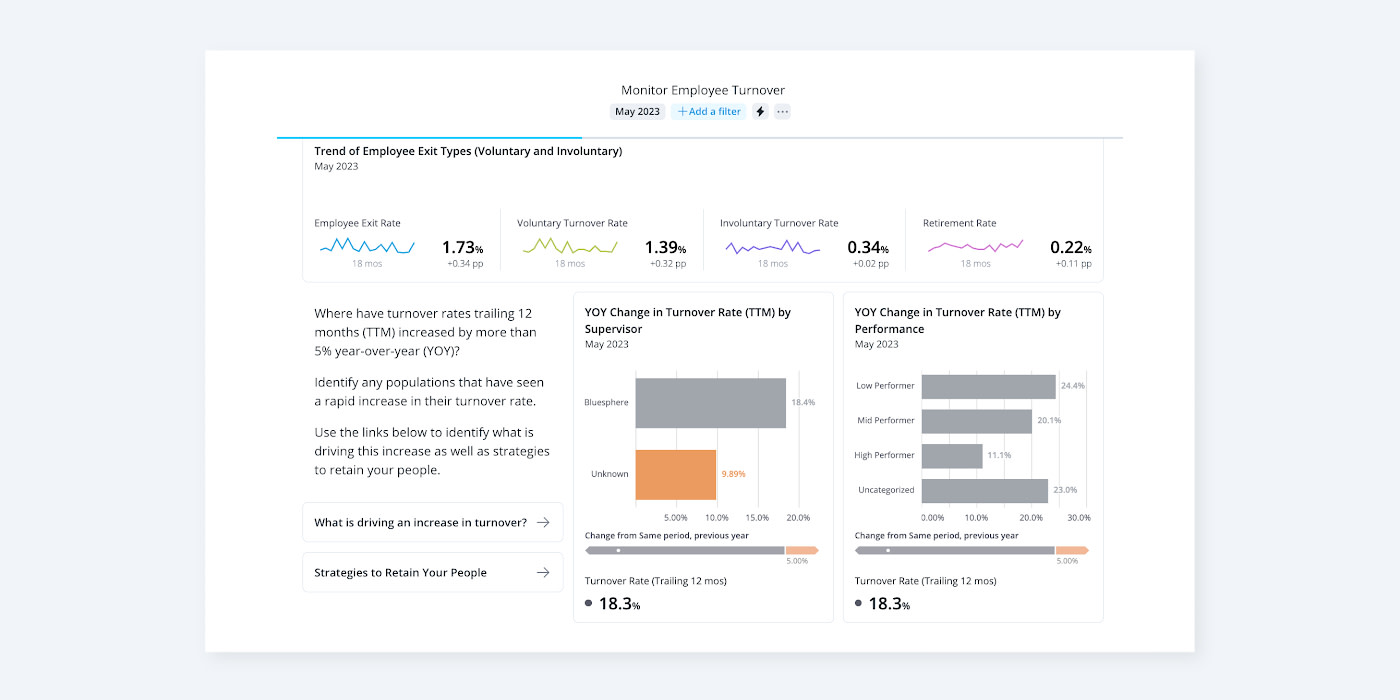
4. Diversity, equity, and inclusion
A diversity dashboard will usually contain many of the core HR metrics, like headcount and compensation metrics, shown in a DEIB lens. For example, you’ll be able to see turnover rates for different genders, races, or ethnicities. Or, look at promotion metrics. Does everyone have equal opportunities or is one gender getting all the promotions?
This dashboard measures diversity metrics, equity, and inclusion initiatives within the organization. It tracks representation across different demographics, measures pay equity, and monitors the impact of diversity and inclusion programs. HR teams can use this data to identify areas for improvement, set goals, and measure progress toward creating a more inclusive and equitable work environment.
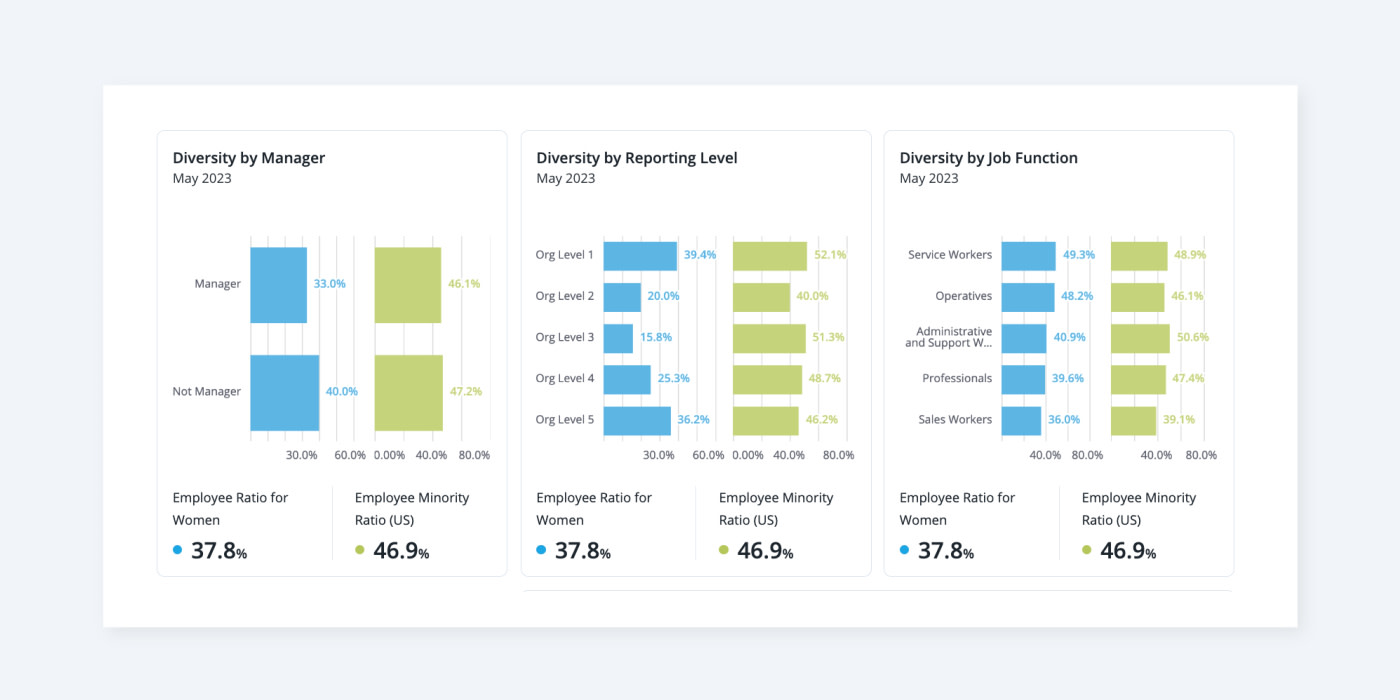
5. HR effectiveness
Measuring HR effectiveness can boost your company’s overall productivity and performance, and help you save costs. A people analytics dashboard built to measure manager effectiveness allows you to keep a pulse on progress specific to your organization's goals. Are you interested in a specific sector, such as reducing turnover rates? Then you’ll need to select the metrics that show what could drive people to leave, or, on the contrary, convince them to stay.
Not sure where to start? Consider building a people analytics dashboard that tracks key HR metrics such as time-to-hire, training effectiveness, time to success for critical and non-critical positions, and employee satisfaction with HR services. It helps HR teams identify areas for improvement, streamline processes, and enhance the overall employee experience.
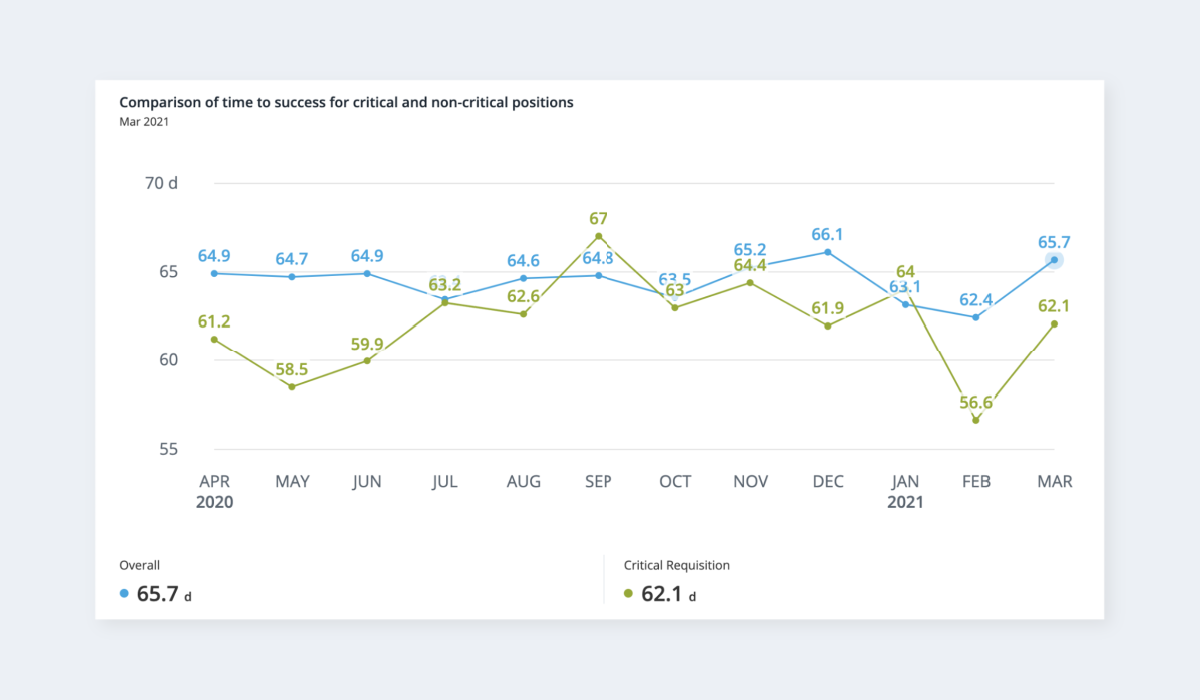
6. Predictive HR analytics
Predictive HR analytics is used to analyze historical data to make predictions about the future. This type of people analytics dashboard leverages predictive analytics to forecast future trends and outcomes based on historical data.
It can help predict employee turnover, identify employees at risk of exiting the business, and forecast talent needs. By using predictive HR analytics, organizations can proactively address potential issues, reduce voluntary turnover rates, and make strategic decisions to optimize their workforce management.
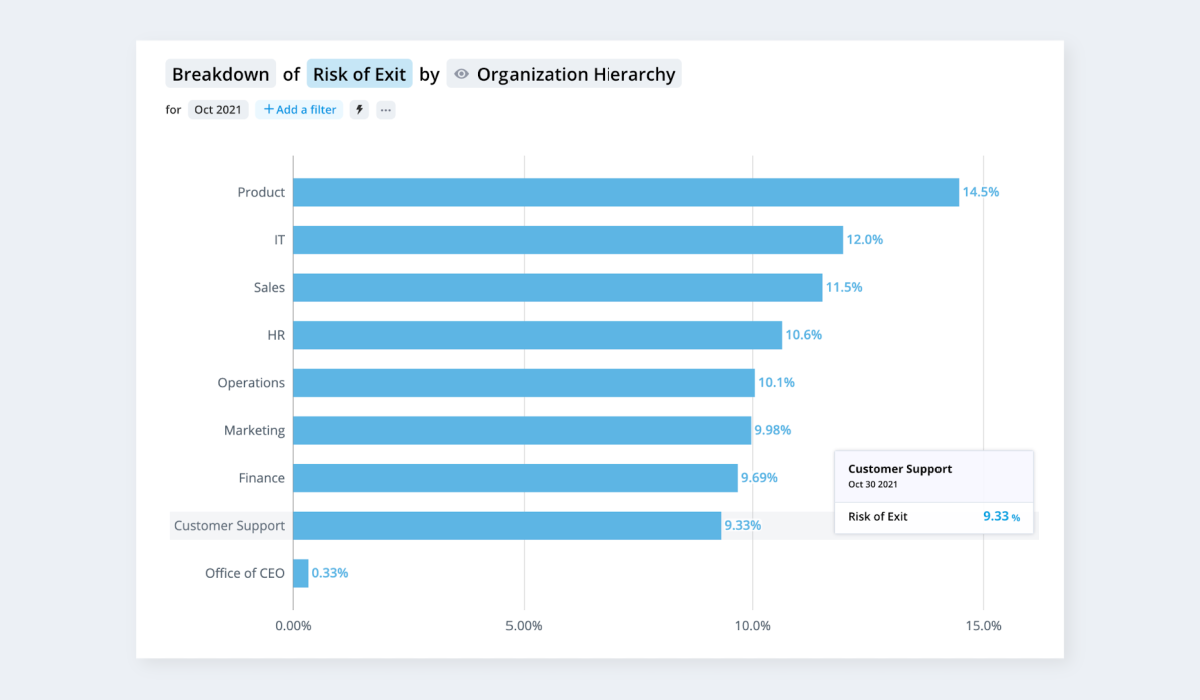
Track metrics that matter in one view
People analytics dashboards are popular in many organizations because they allow leaders and HR team members to quickly review high-level data relevant to the HR function. Dashboards also provide the ability to drill down deeper through links contained within the dashboard that direct to other solutions or pages. HR dashboards may also provide reporting functionality and allow for customization and intuitive user interfaces.
People analytics dashboards help you compile all the data you need to see in a meaningful way, quickly and easily. With people analytics dashboards, you can keep an eye on employee satisfaction and employee engagement to make proactive decisions when problems arise, and evaluate the likelihood of employee turnover and its underlying causes. Use people analytics dashboards to look at internal staff movement more holistically by illustrating the number of new hires, exits, and internal transfers all in one central location.
Create a strategic compensation dashboard to easily look at comparisons and analyses of employee compensation across job functions, geographic regions, seniority levels, demographics, and employee performance. This can be extremely helpful when trying to get ahead of issues related to pay inequities, or when gathering data for ESG purposes.

